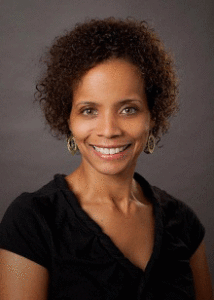
A Boy, A Wrestler and the Racialized Imagination
Now I get it. For the past three months, I couldn’t figure out why a jury would believe that an 18-year old unarmed man would charge – head first – toward a police officer who is shooting at him. Soon after Michael Brown was killed on August 9, several local officials intimated that Brown was charging at Officer Darren Wilson and left no other recourse but to kill him. Why would a person with no history of mental illness or of assaulting police officers do something like that? The story made no sense to me, but now it does.
A person wouldn’t do that, but a superhuman being would. During his testimony before the grand jury, Officer Darren Wilson described his initial encounter with Michael Brown as feeling “like a five year old boy holding onto Hulk Hogan” during the alleged struggle inside his police car. He went on to say “that’s just how big he felt and how small I felt just from grasping his arm.” At best, it is an odd description for a 6’4" policeman to make about another 6’4" person. At worst, it is the resurgence of the “magical negro” or “giant negro” stereotype that has pervaded the imaging of black men since the antebellum era.
 A recent study explored some of the ways in which this particular stereotype is still alive and well today. In A Superhumanization Bias in Whites’ Perceptions of Blacks, the authors relay their findings of white peoples’ attribution of superhuman mental (not intellectual) and physical qualities to black people. This is important because it reinforces the narrative that black men, in particular, have superhuman strength and a very high tolerance for pain.[1] It is a narrative that leads me to question its import in Darren Wilson’s testimony. It is a narrative that has far reaching implications for what Stephen Ray calls the “racialized imagination,” as it perpetuates black people as the “other.”[2] While Ray’s use of the term primarily focuses on the whitening of Christian traditions and history and its implication for theological education, I would like to briefly consider its social and theological implications.
A recent study explored some of the ways in which this particular stereotype is still alive and well today. In A Superhumanization Bias in Whites’ Perceptions of Blacks, the authors relay their findings of white peoples’ attribution of superhuman mental (not intellectual) and physical qualities to black people. This is important because it reinforces the narrative that black men, in particular, have superhuman strength and a very high tolerance for pain.[1] It is a narrative that leads me to question its import in Darren Wilson’s testimony. It is a narrative that has far reaching implications for what Stephen Ray calls the “racialized imagination,” as it perpetuates black people as the “other.”[2] While Ray’s use of the term primarily focuses on the whitening of Christian traditions and history and its implication for theological education, I would like to briefly consider its social and theological implications.
When the racialized imagination is at work, logic and reason seem to be overruled by fear that emerges from negative stereotypes. Officer Darren Wilson did not kill a gentle giant or wrestling figure, he killed a human being. Until black men are imaged as human beings first, I believe that we will continue to have these and other kinds of tragedies. The negative stereotyping of black men that has persisted for centuries has to change if they are ever going to be afforded the right to live into the fullness of their humanity. At the core, this is a theological issue because it undercuts the very notion of the imago dei – that all people are created in the image of God.
Theological education has a role to play in dismantling the racialized imagination. One way is to make explicit the fact that race still matters, and offer a required course for all entering students on understanding racism and white privilege. As we send students out into the world armed with a theological education, we do them and the people they will serve an injustice if we have not explicitly challenged the racial biases that have shaped their current worldviews. The more I hear people say “I don’t see color,” the more I am convinced we need to be challenged to see color anew.
Seeing color is a reality, and how we perceive what we see matters. If we believe we are seeing a superhuman being that has supernatural strength and abilities, we will likely respond accordingly. However, if we believe that we are looking at a child of God, that may yield a different kind of response. Imagine that.
[1] Adam Waytz, Kelly Marie Hoffman and Sophie Trawalter. “A Superhumanization Bias in Whites’ Perception of Blacks” in Social Psychological and Personality Science. First published on October 8, 2014 doi:10.1177/1948550614553642.
[2] Stephen G. Ray, Jr. “E-Racing While Black” in Being Black, Teaching Black: Politics and Pedagogy in Religious Studies, edited by Nancy Lynne Westfield. (Nashville: Abingdon Press, 2008).
Thank you for your hard work, your wisdom, and your continued work, Leah!!!
Excellent article. I hope Eden follows your recommendation. Thank you.
Thank you, Dr. Gunning, for a provocative post. Also, thank you for your presence and prophetic witness in Ferguson.
Very well written, I need to read the sources that you mention!
Dr. Gunning,
Thank you for offering the concept of the racialized imagination to explain why Officer Wilson’s account made sense to white people sharing this same imagination. It is a helpful perspective to share in our teaching and in other settings where we are trying to make sense of the horrific tragedies in our communities.
Columbia Theological Seminary is taking steps to.become more of an “anti-racist institution.” Anti-racism is required of all basic degree students.